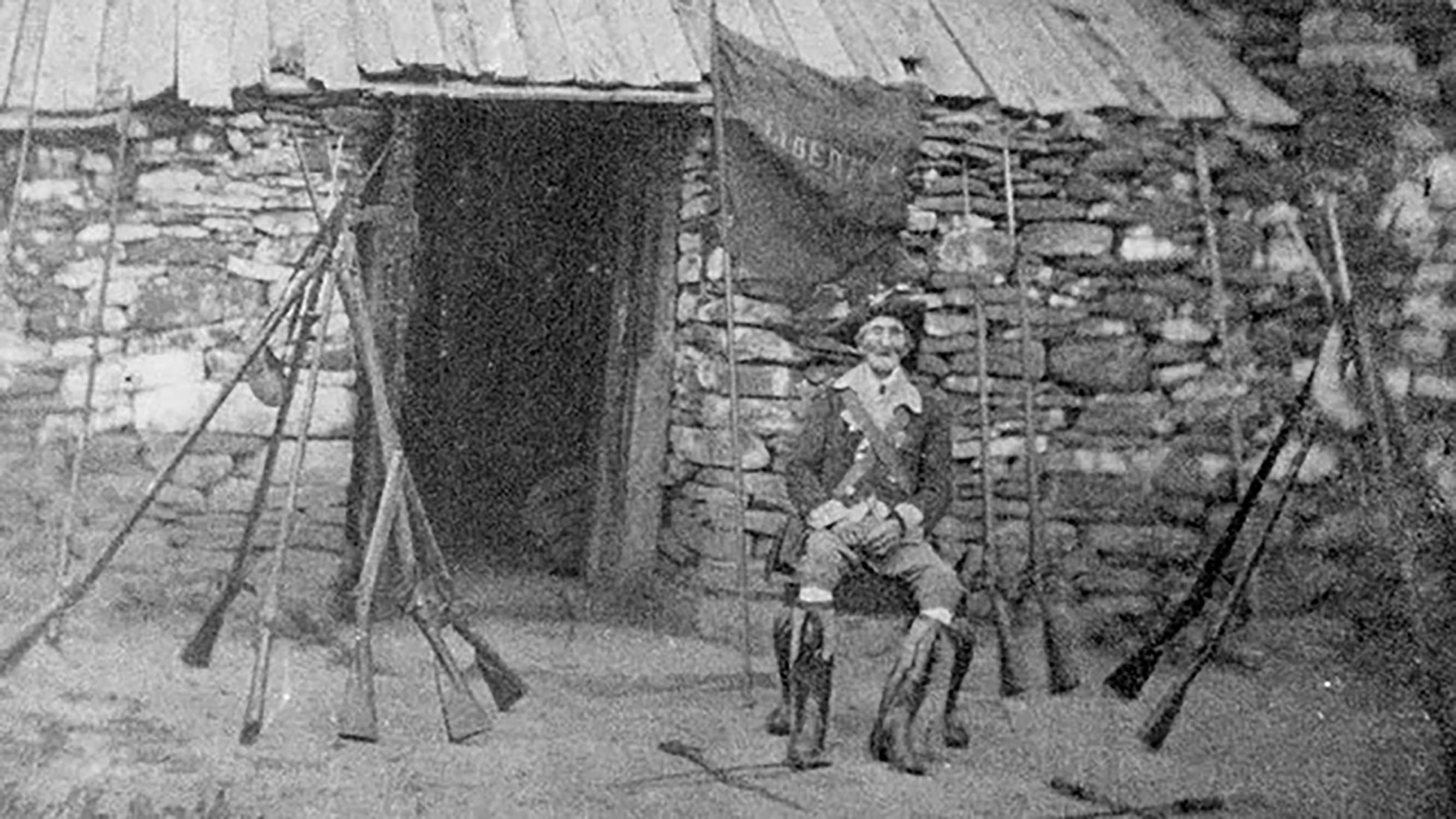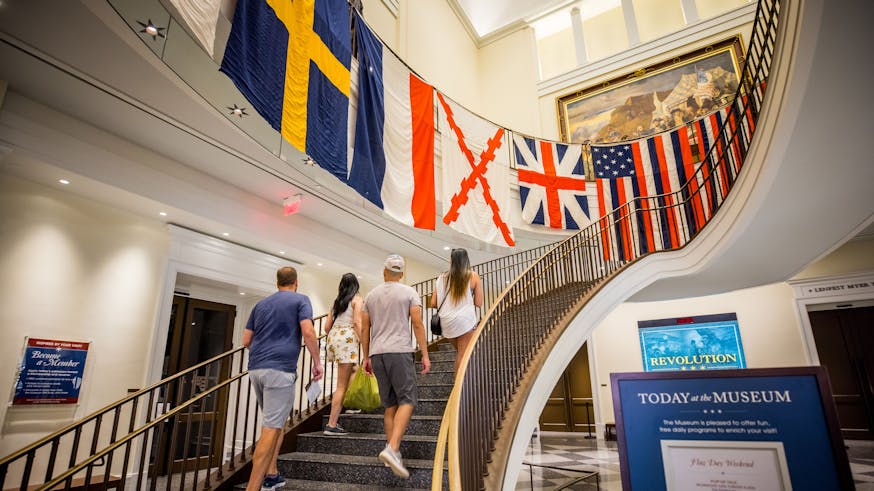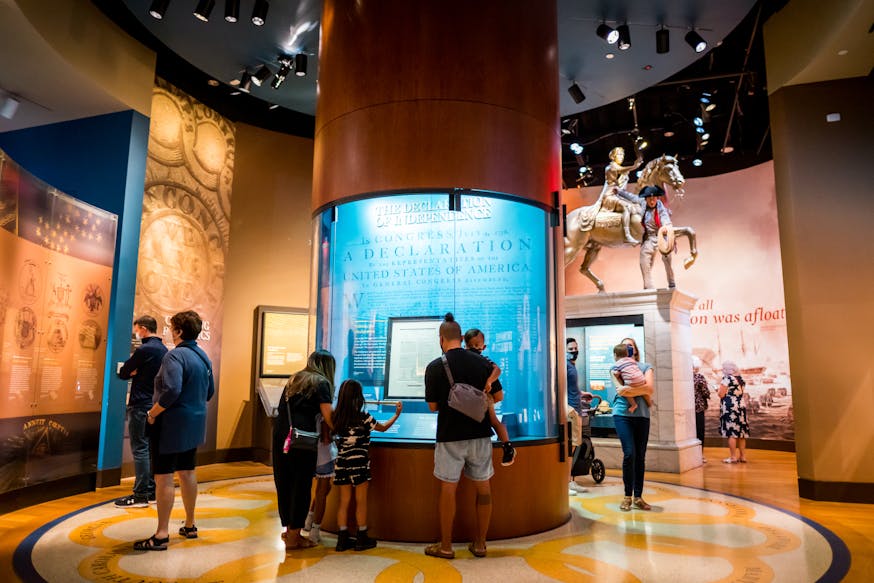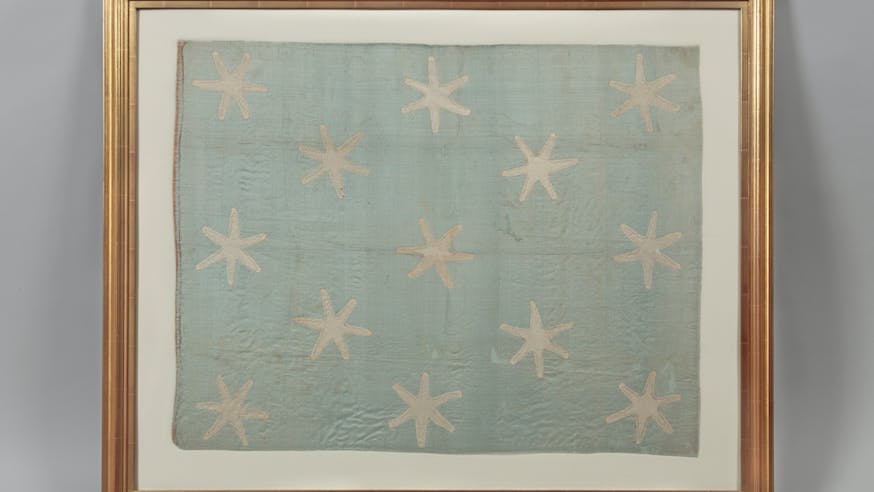News & Updates
Now on View: Schenectady "Liberty" Flag, an Early American Flag
April 27, 2023
A new country needed a new flag.
In 1776, General George Washington’s army carried a variety of flags. They bore symbols and mottoes that expressed the ideals for which soldiers fought. Some had symbols like the New England pine tree or a rattlesnake with the motto, “Don’t Tread on Me.” Another was the chain of states that appeared on the Continental Dollar.
But one popular design, even before independence, simply proclaimed “Liberty." American colonists had been hoisting flags with the word “Liberty” since the Stamp Act crisis of 1765. In 1776, "Liberty" flags no longer symbolized resistance. They now called for revolution.
Now on view at the Museum is this "Liberty" flag, the only surviving example from the Revolutionary War, on loan from the Schenectady County Historical Society. This silk flag with silk lettering was possibly crafted sometime between 1765-1775, potentially for use by the Schenectady Sons of Liberty, which hoisted one fitting its description atop a liberty pole in January 1771. The flag is believed to have been carried by a New York regiment in 1776 and 1777. In August 1776, Adjutant General Major Baurmeister, a high-ranking commander of German-speaking Hessian troops serving alongside the British, reported that “we came into possession of eleven enemy flags with the motto ‘Liberty.’”
Revolutionary War veteran Nicholas Veeder (1761-1862) from Schenectady, New York, owned this flag following the war. He carried it in early Independence Day parades and carefully preserved it as part of his collection of Revolutionary War mementos. Veeder, who is featured in the Museum's core exhibition on the wall of photographs of people from Revolutionary era who lived into the age of photography, is pictured here shortly before his death at age 100. Can you spot the flag?

It would take until June 14, 1777, for Americans to settle on a national flag. That's when Congress passed a resolution adopting a design of 13 alternating red and white stripes representing the states, and 13 white stars on a blue field representing a “new constellation.” This design would become known as the “Stars and Stripes.”
On your next visit, see the Schenectady "Liberty" flag on display opposite another example of an early American flag, the Forster flag, on loan from Brian and Barbara Hendelson. The Forster flag is very likely one of the first efforts to depict the United Colonies and later United States with stripes, and it is one of several surviving Revolutionary period flags that show the British union either cut or painted out of the design.
Learn More

Flag Day 2023 at the Museum
June 14, 2023
Plan Your Visit
